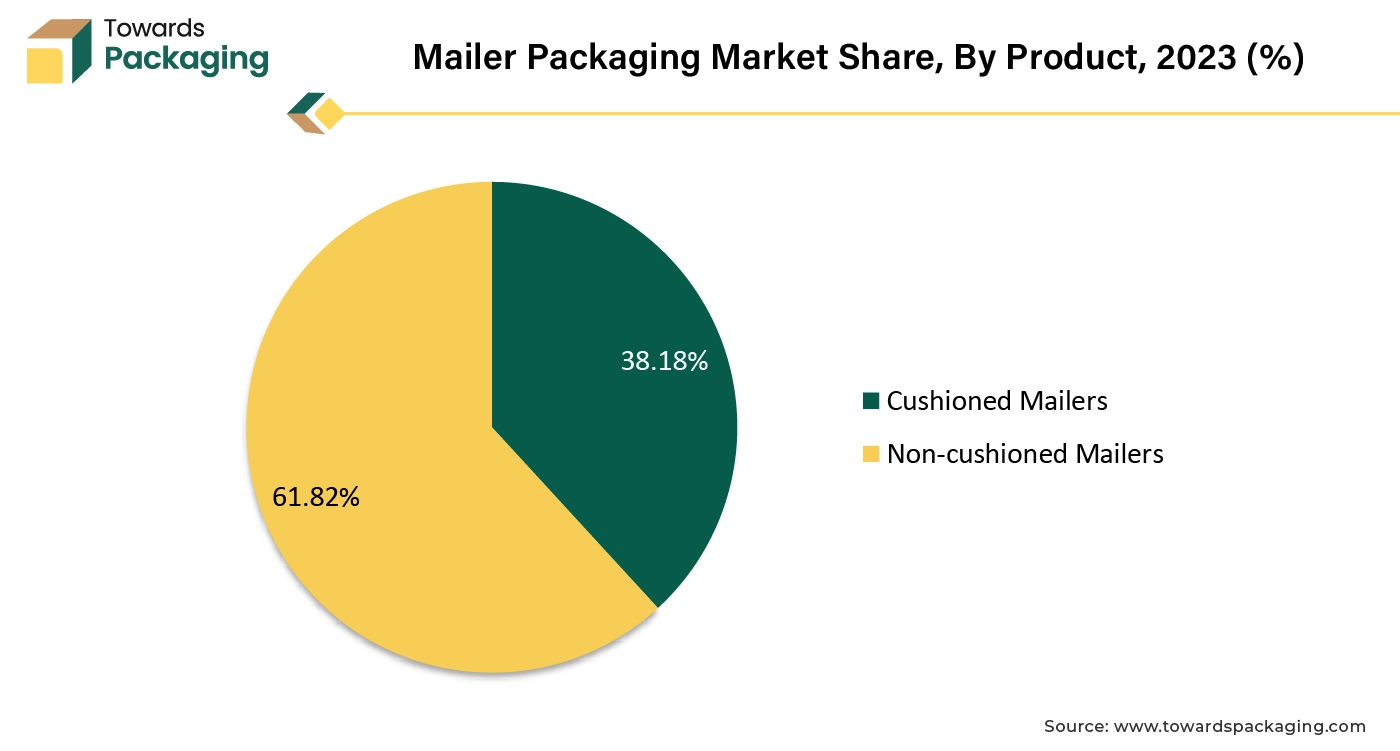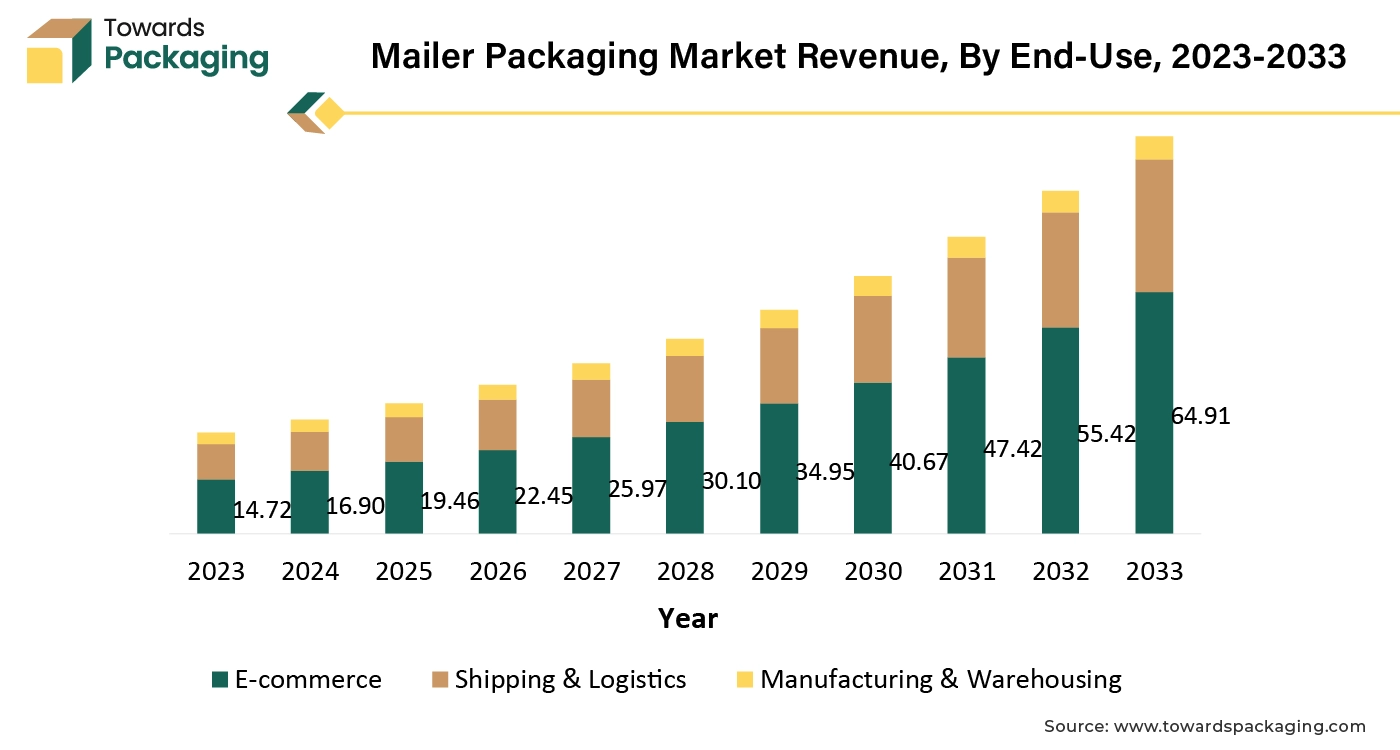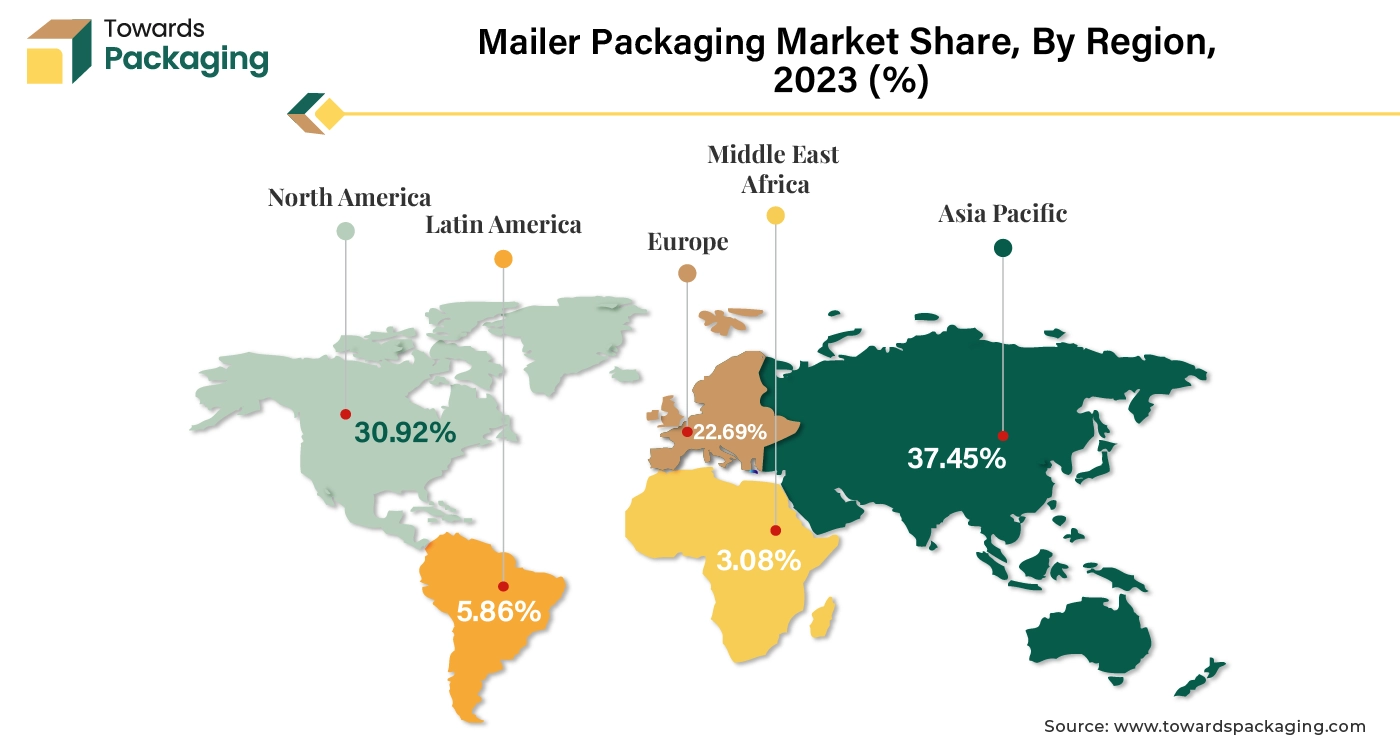April 2025
The mailer packaging market is expected to increase from USD 35.79 billion in 2025 to USD 124.13 billion by 2034, growing at a CAGR of 14.81% throughout the forecast period from 2025 to 2034.

Unlock Infinite Advantages: Subscribe to Annual Membership
The mailer packaging market is projected to grow considerably over the forecast period. Mailing bags are made up of paper or plastic packaging materials that are utilized to ship as well as secure the products while they are in the transportation. It comes in packaging formats such as the rigid mailers, bubble mailers, poly mailers and padded envelopes. They are available in a range of different shapes and sizes to fit a variety of objects including the electronic devices, clothes and documents. Organizations and people use these mailing bags extensively when transporting the products via courier or the postal services. They are less expensive to ship since they are lightweight, strong and take up less room in the vehicles.
The rapid expansion of the e-commerce industry and the shift towards lightweight and cost-efficient packaging to reduce the carbon footprints are expected to augment the growth of the mailer packaging market during the forecast period. Furthermore, the increasing focus on brand differentiation coupled with the growth of small and medium enterprises (SMEs) and direct-to-consumer (DTC) brands is also likely to support the growth of the market.
Additionally, growing trend of online subscriptions and the rise of the gig economy as well as the rising environmental consciousness among consumers and companies are also projected to contribute to the growth of the market in the years to come. The global packaging industry size is growing at a 3.16% CAGR.
The increasing demand for improved alternatives to the traditional packaging is anticipated to augment the growth of the mailer packaging market during the forecast period. Lightweight and slightly fragile items are usually shipped in mailer bags. E-commerce enterprises now favor these shipping bags due to their cost, safety, and numerous other advantages. These mailing bags are strong, weatherproof, 100% recyclable, and available in a range of materials. These bags are utilized by companies, particularly e-commerce ones, to ship goods including apparel, accessories, phone cases, textiles, yarns, and cosmetics, among other things.
Since bubble poly mailer bags offer an additional degree of security, customers may also use them to transport somewhat fragile products like jewelry, purses, smartphones, bottled goods, medications and others. Furthermore, plastic poly mailers are water as well as moisture resistant. Put simply, a product enclosed in these polymer mail bags will not be impacted by moisture or water if it is dropped into a body of water or comes into contact with it.
Also, it is necessary that the items enclosed in these mailers arrive at their destination unnoticed by third parties. Mailers therefore include security mechanisms to identify any type of tampering. Additionally, the bags can be digitally printed and can turn out into a really effective marketing campaign. Shipping bags are going to make it simpler to print the taglines, logos and other kinds of graphics on them compared to the conventional packing materials. As a result, this will help businesses differentiate their brand, contributing to the growing preference for the mailer packaging options in the market.
The growing environmental concerns and regulatory challenges are anticipated to impede the growth of the mailer packaging market within the estimated timeframe. Packaging uses forty percent of all plastic produced annually, with disposable packaging making up the majority. Merely 9% of the total plastic generated worldwide has been recycled. The majority is disposed of in the landfills, incinerators, the environment and large volumes of waste in localities, beaches, rivers and the ocean. Since fossil fuels are the primary source of almost all plastics, every stage of the production, usage, and disposal of plastics produces pollutants and greenhouse gases.
Also, More than half of all paper produced annually is utilized for packaging. Every year, 3 billion trees are cut down to make packaging of paper. Paper packaging is a major factor in the destruction of forests, especially old and threatened forests, which has catastrophic effects on wildlife, human health, the environment, and forest communities. Furthermore, governments as well as the regulatory bodies across the globe are increasingly focusing on reducing the environmental impacts, leading to the implementation of the strict regulations aimed at curbing the use of the non-sustainable materials in packaging.
For instance,
The shift towards sustainability by both the consumers as well as the companies is expected to create opportunities for the growth of the mailer packaging market in the near future. Customers are moving toward sustainable items with a purpose, and as more purchases are made by younger generations, the trend will continue to evolve. According to a survey conducted by the Mondi Group, eighty percent of the respondents indicated that convenient packing disposal after product delivery was important and eighty-four percent claimed that sustainability was a top priority.
In light of this, paper mailers are a packaging option that e-commerce businesses should take into account as a way to adapt to evolving consumer behavior. Their most appealing aspect from the perspective of the consumer is that they support the idea of how paper may serve as an eco-friendly material than plastic. They are effective and present significant cost savings opportunities. Furthermore, mailers establish a positive impression with the customers right away by using paper to convey the fact that they are getting a product that is sustainable.
For example,

The non-cushioned mailers segment captured the largest market share of 61.82% in 2024. When no cushioning is needed to preserve the contents during the transit to the final destination, non-cushioned mailers are the preferred choice. Most of the companies provide a selection of affordable ways to deliver a note or a sturdy object to the recipients. They are ideal for the products such as the toys, clothes, linens, soft home goods and pet supplies, among others. Additionally, their minimalistic design reduces the material costs further along with the shipping expenses that are attractive to the companies looking to optimize their logistics and improve profitability.

The e-commerce segment held largest market share of 54.21% in 2024. This is owing to the rapid and continuous growth of online shopping as well as rise of direct-to-consumer (DTC) brands and small businesses operating online. In terms of online shopping, mailer bags are beneficial. In addition to all the many advantages they offer, they also give companies a chance to bring attention to their brand. Customers' purchasing experiences can be improved by adding a personalized touch to their unboxing experience by printing a company's logo, colors as well as promotional messages on customized poly mailers.
Mailer bags have changed the game in the e-commerce sector, as the security and appearance of delivered goods can affect buyer satisfaction and company reputation. Moreover, biodegradable and recyclable mailer bags are growing in popularity as companies work to become sustainable. These environmentally responsible choices minimize their negative effects on the environment.

Asia Pacific dominated the global mailer packaging market and is likely to grow at fastest CAGR of 16.84% during the forecast period. This is owing to the rising internet penetration, growing percentage of middle-class population in addition to the increasing disposable incomes across the region.
According to the data by International Telecommunication Union (ITU), about 66% of the population in the Asia Pacific region was using internet in 2024, in line with the global average.
Furthermore, the rapid urbanization in developing economies like India and China coupled with the changing consumer lifestyles is also likely to support the growth of the market in the region. Additionally, the expansion of the small and medium enterprises (SMEs) along with the growing population is also anticipated to promote the growth of the market in the region in the years to come.
North America held considerable market share of 30.92% in 2024. This is due to the well-established and continuously growing e-commerce industry and the growing demand for the convenience across the region. Also, the strong focus on eco-friendly packaging, the growing consumer awareness of environmental issues as well as the stringent government regulations aimed at reducing plastic waste are further expected to support regional growth of the market in the years to come. Furthermore, the increasing importance of the branding and customer experience along with the evolution of the retail industry is also expected to support the regional growth of the market in the near future.
By Material Type
By Product
By Insulation
By End-Use
By Region
April 2025
April 2025
April 2025
April 2025